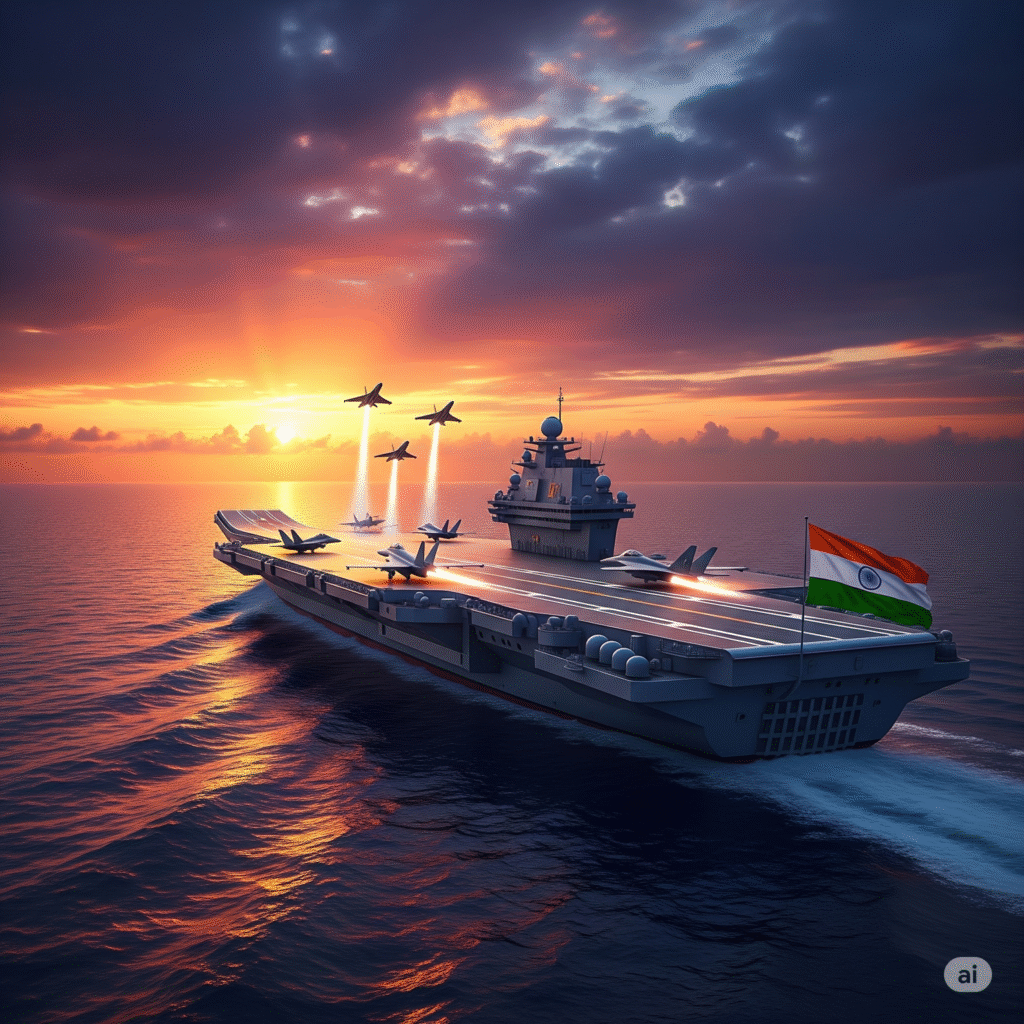India plans a new supercarrier. Its name is INS Vishal. This ship will be the largest in the Indian fleet. Moreover, it will bring advanced tech and wider reach. In short, Vishal aims to change India’s naval posture in the Indo-Pacific.
Background and Purpose
The carrier follows the induction of INS Vikrant. However, Vishal is a clear step up. It will support larger air wings. Also, it will host heavier aircraft and drones. Consequently, India will gain more operational flexibility at sea.
Design, Size and Propulsion
Vishal’s displacement is projected above 65,000 tonnes. This makes it larger than current Indian carriers. For propulsion, designs consider both conventional and nuclear options. Nuclear power offers long endurance without frequent refuels. Thus, it suits blue-water operations.
Flight Deck and Launch Systems
The carrier is likely to use a CATOBAR launch system. CATOBAR stands for Catapult Assisted Take-Off But Arrested Recovery. This system will let India launch heavier jets. In addition, it will enable larger unmanned combat aerial vehicles (UCAVs). As a result, the air wing will be versatile and persistent.
- Aircraft capacity: expected 40–55 aircraft
- Possible fighters: naval Rafale, naval Tejas variants, multirole UCAVs
- Support: heavy helicopters and AEW platforms
Key Technologies
Vishal will integrate modern systems. For example, EMALS (electromagnetic catapult) is under consideration. Also, advanced AESA radars and integrated electric propulsion are planned. These will improve sortie rates and reduce signatures.
Strategic Importance
The Indo-Pacific is a key theatre. Therefore, a powerful carrier like Vishal will matter. It will support maritime security, sea-lane protection, and power projection. Further, it will strengthen India’s role as a net security provider in the region.
Operational Roles
- Power projection beyond coastal seas
- Carrier strike group command and control
- Maritime surveillance and ASW coordination
- Humanitarian assistance and disaster relief (HADR)
Timeline and Development Challenges
The project remains in the design stage. Construction may start later this decade. Yet, several hurdles exist. First, cost estimates exceed billions of dollars. Second, advanced tech like EMALS may need foreign partnerships. Third, supply-chain readiness and skilled shipbuilding capacity must scale up.
Interoperability and Air Wing
Vishal will operate alongside other platforms. For example, it will complement future air assets like AMCA in doctrine and training. Also, it will link with shore-based maritime patrol aircraft and submarines. This creates a layered defence posture.
Economic and Industrial Impact
The carrier will boost the domestic shipbuilding sector. It will create skilled jobs. Moreover, it will drive up demand for aerospace systems and naval electronics. Thus, Vishal supports the Make in India agenda and indigenous defence manufacturing.
Related Reads
For context and deeper reading, see:
- INS Vikrant – India’s Indigenous Carrier
- Indian Navy Stealth Destroyer (Project 15B)
- How to Join the Indian Navy
- Defence Jobs in India: Complete Guide
Note: As design details firm up, DefenceNiti will update this article. For now, Vishal represents ambition and a clear strategic shift for the Indian Navy.
Conclusion
INS Vishal promises new reach and power. It will bring larger air wings, new tech, and stronger deterrence. Yet, it will also demand time and resources. Therefore, careful planning and steady execution will be essential.



Pingback: INS Vikrant – India’s Indigenous Aircraft Carrier - DefenceNiti.com